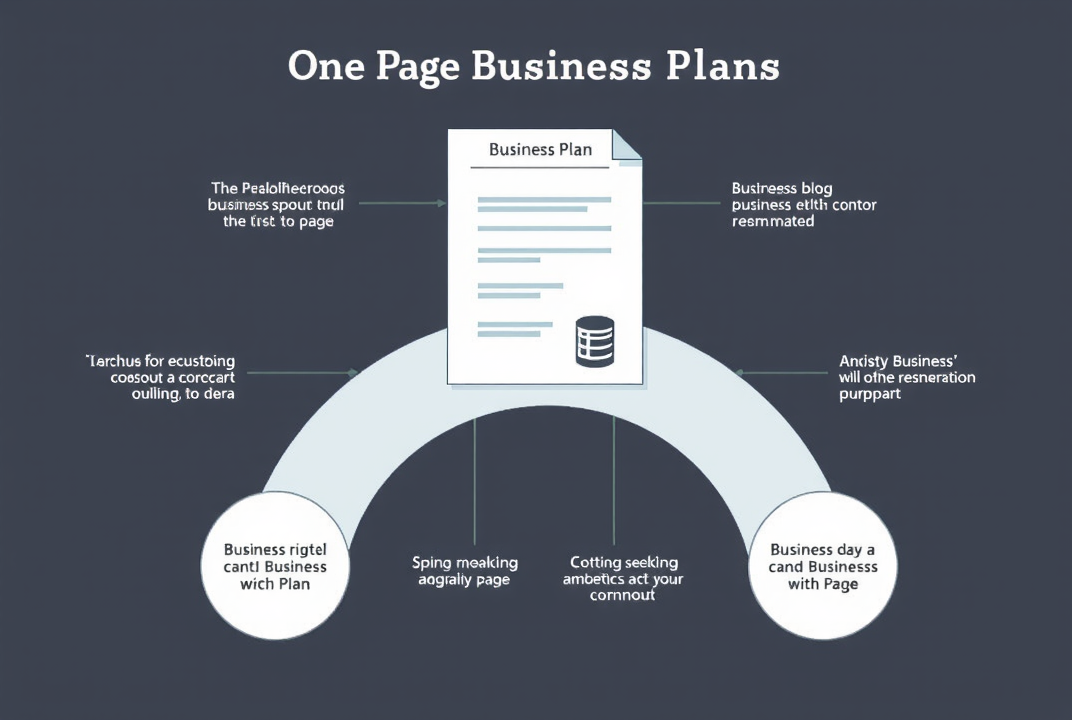The Ultimate Guide to Creating a One-Page Business Plan

Introduction
Are you itching to start your own business but feel overwhelmed by the complexities of a traditional business plan? You're not alone. Many aspiring entrepreneurs shy away from planning because it seems daunting. However, what if you could distill your entire business strategy into a single page? This is where the one-page business plan comes in.
In today's fast-paced world, time is of the essence. The ability to swiftly communicate your business ideas while maintaining clarity can be a game-changer. A one-page business plan offers a concise and effective way to outline your business objectives, strategies, and actionable steps.
What You Will Learn:
-
Understanding the Basics: What Is a One-Page Business Plan?
-
Key Elements to Include in Your One-Page Business Plan
Step-by-Step Guide to Crafting Your Plan
Common Mistakes to Avoid
Real-Life Examples and Success Stories
-
Next Steps: Implementing Your Plan and Moving Forward
Understanding the Basics: What Is a One-Page Business Plan?
Before we dive into the creation process, let's clarify what a one-page business plan actually is. Unlike traditional plans, this streamlined version focuses on the core elements of your business without unnecessary detail. It's not about cutting corners but prioritizing what truly matters.

Key Elements to Include in Your One-Page Business Plan
-
Vision Statement:
-
Define the future state of your business and its purpose. This statement should inspire and provide direction.
-
-
Mission Statement:
-
Address the fundamental purpose and primary objectives of the business.
-
-
Objectives:
-
Clearly outline the specific, measurable goals you wish to achieve.
-
-
Unique Selling Proposition (USP):
-
What distinguishes your product or service in the market?
-
-
Market Analysis:
-
Provide insights into your target audience and competitors.
-
-
Marketing Strategy:
-
Describe your plans for reaching potential customers.
-
-
Financial Overview:
-
Present the financial projections or funding needs concisely.
-
-
Action Plan:
-
A clear roadmap detailing the steps you need to start and grow your business.
-
A Step-by-Step Guide to Crafting Your Plan
Creating a one-page business plan requires thoughtful consideration. Here’s an actionable pathway:
-
Start with the Vision and Mission:
-
Articulate your aspirations. Keep them short but impactful.
-
-
Identify Your Objectives and Goals:
-
Focus on 3-5 key objectives. Ensure they are measurable.
-
-
Construct Your USP:
-
What makes your company unique? Craft a clear and engaging sentence.
-
-
Perform a Market Analysis:
-
Research your industry and understand who your competitors are.

-
-
Outline Your Marketing Strategy:
-
Determine the most effective ways to attract your customers. Social media? Networking?
-
-
Draft a Financial Overview:
-
Highlight your main financial targets. Are you seeking investment or focusing on a lean startup?
-
-
Define Your Action Plan:
-
Break it down into actionable, time-bound steps.
-
Common Mistakes to Avoid
While the simplicity of a one-page business plan is appealing, certain pitfalls can undermine its effectiveness.
-
Vagueness:
-
Avoid broad statements. Be specific in defining your objectives and strategies.
-
-
Overloading Information:
-
Stick to essentials. It’s about brevity, not cutting corners.
-
-
Lack of Clarity in Financials:
-
Ensure your financial projections are clear, even if they’re concise.
-
-
Neglecting to Update the Plan:
-
This isn’t a static document. Regular updates keep it relevant.
-
Real-Life Examples and Success Stories
Consider Mike, a budding entrepreneur who wanted to open a food truck business. His one-page plan helped him quickly secure funding and begin operations in under six months.
Or consider Sarah, who utilized a one-page business plan for her freelance design agency. By focusing on customer needs and positioning her brand, she swiftly grew her business without cumbersome paperwork.
These stories illustrate the power of clear, strategic planning.
Next Steps: Implementing Your Plan and Moving Forward
Upon crafting your plan, it’s time to execute. Begin by taking small, manageable steps towards each objective. Regularly measure performance against your goals and adjust as needed.
Partner with mentors or networks to provide guidance when challenges arise. Embrace adaptation but stay true to your initial vision.
Conclusion
Crafting a one-page business plan can streamline your approach to starting and managing your business. With the right mindset and tools, you can effectively transform your ideas into reality.
Action drives success. Start drafting your plan today and take the first step towards turning your entrepreneurial dreams into achievements.
